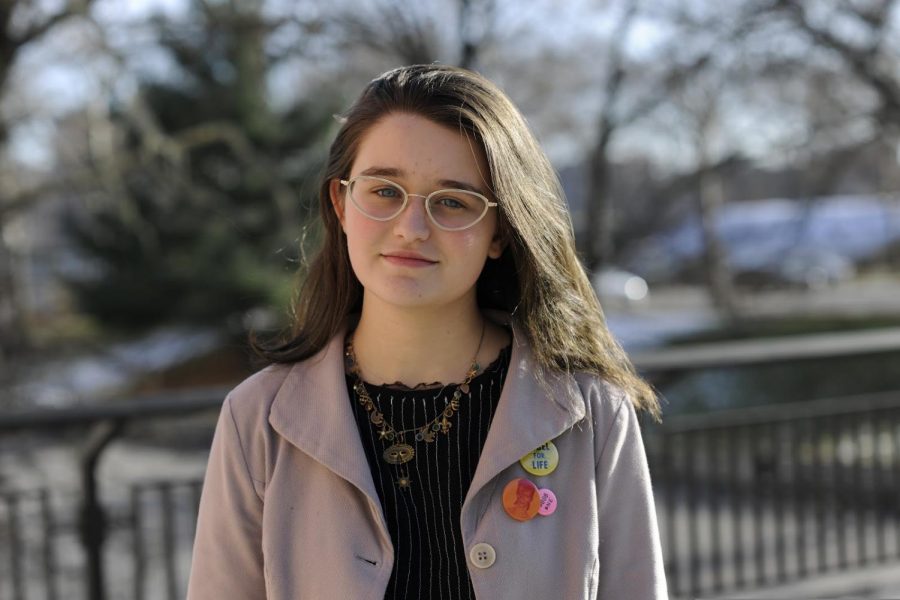Tackling Our Biases
Join the challenge!
Edie Fine ’21 is careful to acknowledge her privilege and how it affects her biases.
Implicit bias is the unconscious association of certain stereotypes or characteristics with different social groups such as race, gender, and religion. While people can try and deny their unconscious biases, the truth is that everyone has them whether they want to or not. The way to get past them, however, is to acknowledge their existence and challenge them. Consider this article a challenge to all who read it to try at least one of the implicit bias tests and consider whether you may have any implicit biases you may not be aware of.
A group of researchers part of a non-profit organization called “Project Implicit” tried to bring awareness to this idea through their Implicit Association Test (IAT). The IAT calculates subjects’ association between different groups, (e.g. young people, disabled people, or people of various religions) with different stereotypes or emotions (i.e. “good” vs “bad”). The test has five parts in which the subject is asked to sort different words into categories on either side of the screen. The results are based on the time it takes to sort the words in the different parts of the test, to see if associating one group with certain stereotypes comes faster or easier for the subject than a different group to those stereotypes.
Some Bronx Science students rose to the challenge and took one of the tests with relatively varied results. Some students were surprised to learn about the biases they never realized they harbored, while others understood where their biases may have come from. Some students thought Project Implicit’s tests were a good way to gauge implicit bias, while others felt the tests could use some improvement.
An anonymous student took the Religion IAT and received a strong preference for Christianity over Judaism, yet he was not very surprised at his results. “I am a Catholic myself, and feel more comfortable with my religion, which isn’t to say I disregard or denounce any other,” he said. Though he understands where his biases come from, it doesn’t mean that he doesn’t want to improve his image religions like Judaism. “I should go out of my way to place other religions at the same level of integrity and importance as my own, since they are just as credible and deserve to be treated as such,” and he hopes to continue to hold himself accountable. “Implicit bias is something in the back of my head, as it is with everybody, but it’s a constant effort to evade that bias and not let it affect my judgment.”
Another student, who also asked to remain anonymous, took the Weight IAT and found a strong preference for thin people. Similarly to the last student, this student wasn’t very surprised about their results either. “I’ve been pretty thin all my life, and most of my friends are as well. But I don’t feel I’ve acted on that bias super hard,” he said. “I don’t go out of my way to disrespect heavier people or treat them any differently.” One big difference between the students’ responses, however, was the fact that this student didn’t feel that implicit bias had an “extreme effect on [their] day-to-day life,” while the first student seemed to contemplate their religious bias more regularly.
Edie Fine ’21 was also unsurprised by her results, but in her case, she had a bias toward a marginalized group. Fine took the Sexuality IAT and received a moderate automatic preference for gay people over straight. Fine said that her results, “were not surprising because this test was in a category that I spend a lot of time thinking about, and pertained to a community that is extremely prevalent in my life.” Fine also had very positive remarks about the test itself as she felt that “it doesn’t give an opportunity [for one to] to defend or argue your way out of your biases. It recognizes that everybody has implicit biases. The sooner we can accept that, the sooner we can work to combat them and reform our behavior.” Much like the first student, Fine consciously considers possible biases in her day-to-day life. “I experience this world differently because of my privilege as a white person, and I think society hasn’t always taught me to confront my internal biases. But by recognizing that they exist, I definitely pay more attention to my behavior and try to call myself out when I realize they’re coming from a place of bias,” said Fine.
These students’ responses illustrate how integral implicit bias really is evident both in our school and in society. Whether or not these students recognize these biases and why they exist, they recognized that they do, in fact, exist. If everyone took this test and was able to come to terms with the fact that they have implicit biases, maybe we could start acting against them and not allowing our biases, implicit or explicit, to affect our relationships with others.
It recognizes that everybody has implicit biases. The sooner we can accept that, the sooner we can work to combat them and reform our behavior.
Leann Goldberg is an Editor-in-Chief for ‘The Science Survey.’ She thinks journalistic writing is important because it allows the public to stay informed...
Taylor Chapman is the Editor-in-Chief of ‘The Science Survey’ and an Academics Section Reporter for ‘The Observatory.’ The learning experience...

